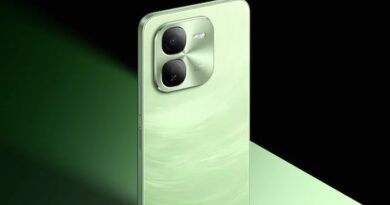Stem Cell Therapy Offers Relief for Critical Limb Ischemia (CLI) Sufferers

Ahmedabad: Critical limb ischemia (Reduced blood flow or oxygen supply) or CLI is a condition in which there is a severe blockage in the blood vessels that markedly reduces blood-flow of the extremities such as hands, feet and legs. It is a severe stage of peripheral arterial disease, or PAD which is basically caused by the hardening and narrowing of the blood vessels due to the build-up of fatty deposits or plaque.
The risk factors for PAD and CLI include older age, smoking, high cholesterol levels, chronic kidney disease, hypertension, and diabetes. In fact, smoking greatly increases the risk of CLI due to chronic inflammation or swelling in the blood vessels of the legs. In addition to ulcers, patients with CLI have a very high-risk of heart disease, amputation and death. Basically, amputation is the removal of a limb by surgery. If the skin of the foot cannot heal, then infection or gangrene can develop and eventually lead to amputation.
On the other hand, heart disease and stroke are one of the leading causes of death among patients with CLI. For this reason, medical treatment or prevention of risk factors is paramount. One can prevent these complications by quitting smoking. Research has shown that quitting smoking, even after the development of CLI, lowers the chances of leg amputation. Additionally, all patients with CLI should be treated with statin medications to reduce the risk of heart attack and amputation. On the other hand, medical control of blood sugar levels may help decrease the risk of amputation and improve wound healing.
Dr. Vijay Thakore – Senior Vascular Surgeon, Aadicura Superspeciality Hospital, Vadodara commented on the treatment of CLI saying “Treatment for CLI can be quite complex and individualised. However, the number one priority is to preserve the limb. Several medications may be prescribed to prevent further progression of the disease and most certainly to reduce the pain. Medications that prevent clotting or fight infections may also be prescribed. The primary treatment for CLI is to restore blood flow to the affected leg and provide enough blood flow to heal any leg and foot wounds. This can be done by surgical bypass or angioplasty. A number of regenerative therapies, including stem cell therapy have been tested in patients with PAD and CLI.
Dr. Sumit Kapadia, Vascular Surgeon, Aadicura Superspeciality Hospital, Vadodara, explained Cell-based therapies saying, ”Cell-based therapies have emerged as a new frontier in this direction, and are now being considered as a potential newer therapeutic alternative for CLI. Stem cells have a great deal of potential for differentiation and evolution into various cell types. The surrounding cellular environment gradually stimulates the stem cells, resulting in the creation of specialised cells that are identical to those with which they come into contact and grow. The effects of this, notably neoangiogenesis, ability to develop into new small blood vessels. As a result, restoring blood circulation and responsible for these reparative activities”.
Dr. Hiten Patel, Vascular & Endovascular Surgeon, Aadicura Superspeciality Hospital, Vadodara commented on the symptoms of CLI saying, “The decrease in blood flow to the legs and feet can cause a number of symptoms of CLI such as pain in the foot or leg even with or without walking. This pain is worse at night due to decreased blood flow when lying down. This pain can be so severe that it can lead to sleep disturbances. One can also experience ulcer or sore on the foot and gangrene. Sometimes, patients present with diminished pulse in the legs and inability to heal a superficial or deep injury to the foot”.
Dr. Kushan Nanavati Vascular & Endovascular Surgeon, Aadicura Superspeciality Hospital, Vadodara said, “According to the latest clinical evidence, autologous cell treatment has the potential to favourably alter the natural history of intractable CLI with a superior composite clinical result. It revealed a decrease in amputation risk, an increase in amputation-free survival, enhanced wound healing, and a decrease in rest pain without altering mortality”.
The preferred site for stem cell injection in the treatment of Critical Limb Ischemia (CLI) is intramuscular, targeting the muscle bulk of the affected limb. The effectiveness of this therapy is evidenced by a reduction in CLI symptoms, including decreased limb pain, improved walking distance, and an enhanced quality of life. Patients typically require hospitalization for a minimum of 24 hours, with some cases extending to 48 to 72 hours, depending on individual needs. The procedure has a minimal risk of side effects, with the most common complaint being mild fever lasting one to two days.
FOLLOW FOR MORE.







Hi my loved one! I want to say that this article is awesome, nice written and come with almost all vital infos. I’d like to see extra posts like this .
Absolutely indited subject matter, thanks for information .
Hello World聊天翻译助手专注于为出海企业提供高质量的即时聊天翻译服务,专业聊天翻译技术,极速稳定收发,全球畅游,使用邮箱免费注册登录体验,专业翻译技术团队开发,超数百家企业信赖,支持whatsapp Line Tinder Twitter Instagram Telegram Zalo Facebook Badoo Bumble Quora Linkedin googleVoice Crisp Hangouts TextNow VK等软件的实时聊天翻译,无限网页多开。支持facebook群发,whastsapp群发,googleVoice群发 HelloWord翻译 https://www.hiword.cc
Perfectly written articles, Really enjoyed examining.
I all tthe time usaed too resd parsgraph in news paperes but now
ass I aam a user oof net therefore fromm now I amm using net for posts,
thanjs tto web.
I’d have to examine with you here. Which is not one thing I usually do! I take pleasure in reading a post that may make folks think. Additionally, thanks for permitting me to comment!
I have been browsing online greater than 3 hours nowadays, yet I never found any attention-grabbing article like yours. It is pretty worth sufficient for me. Personally, if all webmasters and bloggers made excellent content as you did, the web shall be a lot more useful than ever before. “Baseball is 90 percent mental. The other half is physical.” by Lawrence Peter Berra.